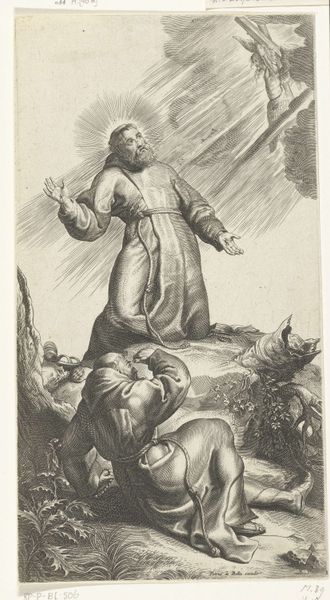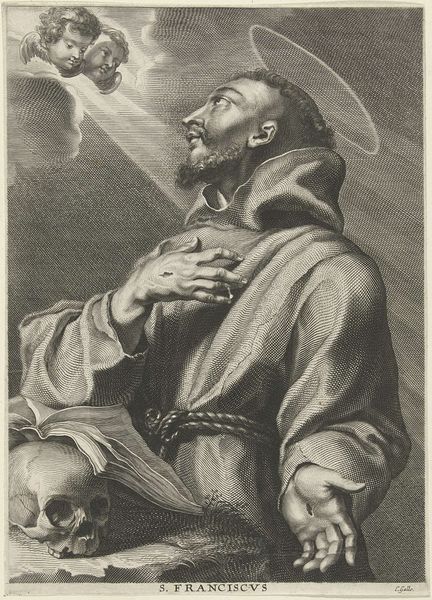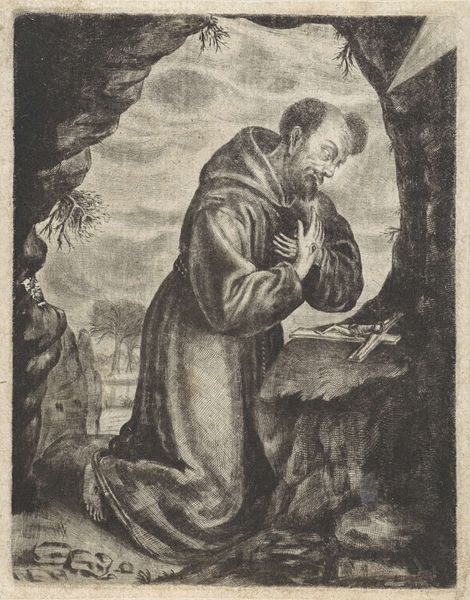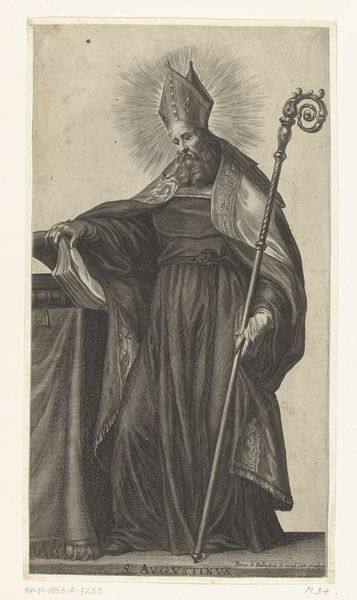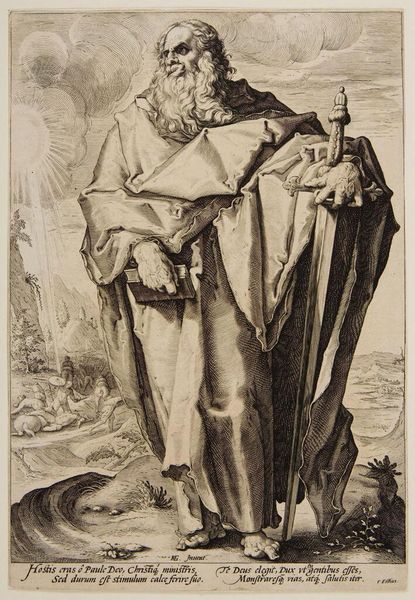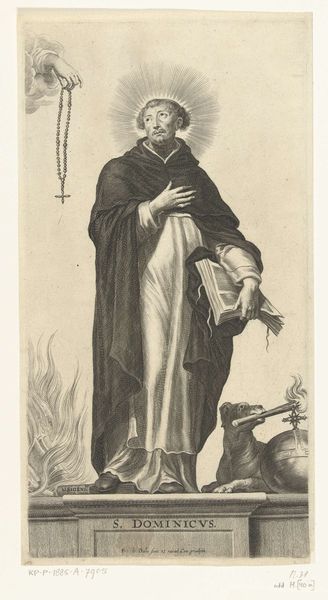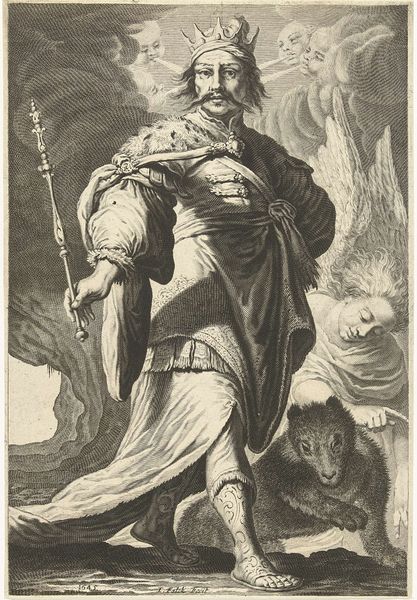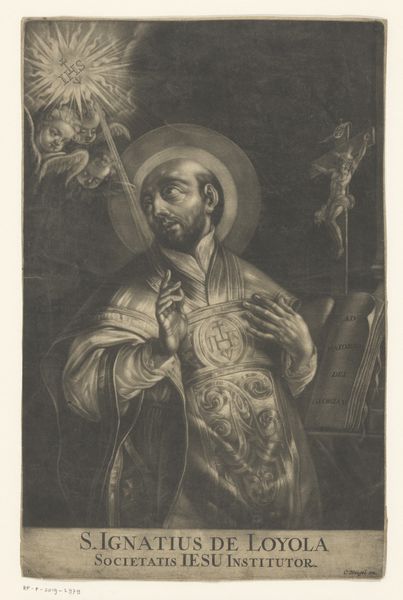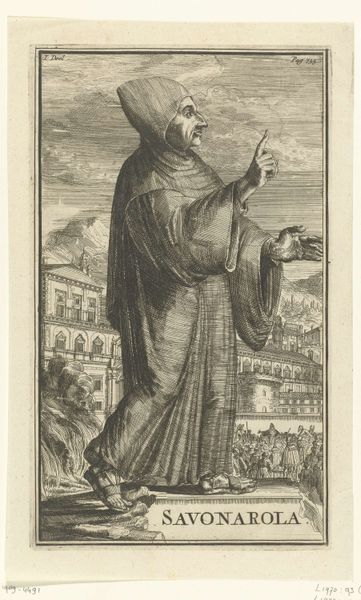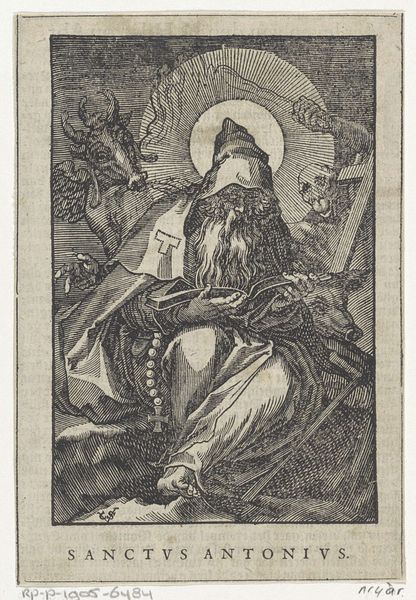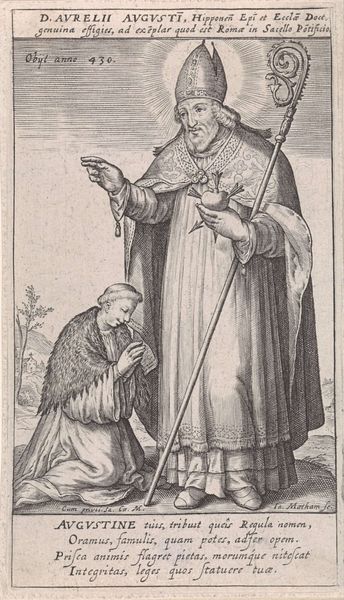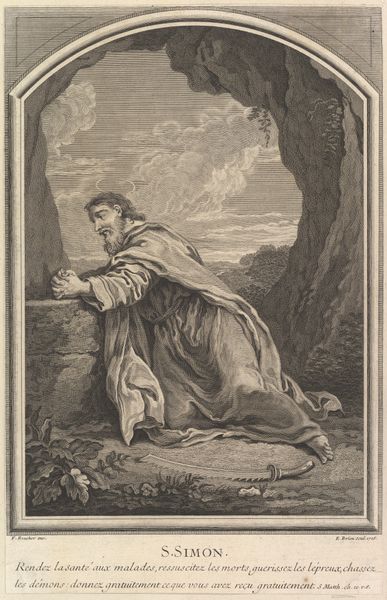
Heilige Antonius van Padua verricht wonder met ezel die voor hostie knielt 1623 - 1660
0:00
0:00
engraving
#
baroque
#
figuration
#
line
#
history-painting
#
engraving
Dimensions: height 249 mm, width 139 mm
Copyright: Rijks Museum: Open Domain
Curator: This engraving, held here at the Rijksmuseum, depicts “Heilige Antonius van Padua verricht wonder met ezel die voor hostie knielt,” or Saint Anthony of Padua performing a miracle with a donkey kneeling before the Host. It's attributed to Pieter de Bailliu and dates somewhere between 1623 and 1660. Editor: What strikes me immediately is the textural contrast – the saint's smooth face, the donkey's coarse fur, and the ethereal quality of the angels rendered in a simple black and white print. You can almost feel the rough paper it’s printed on. Curator: Absolutely, Bailliu's skill with line creates a depth that’s unexpected in engraving. Let’s think about what’s being depicted. We have the iconic figure of St. Anthony, here proving the doctrine of transubstantiation through this rather dramatic event. The donkey, having been deprived of food, chooses the Eucharist over fodder. The meaning seems pretty clear. Editor: Indeed, the visual language here reinforces hierarchical structures – sacred above sustenance, spirit over matter. I'm intrigued by the relationship between labor, both animal and presumably human to feed the animal and the supposed higher calling here. Also, consider the symbolic weight of the host. Curator: Interesting… How so? I mean we are seeing a staged conversion scene that illustrates the saint's powers and devotion by underlining the Eucharist and transubstantiation. The scene works primarily at illustrating a complex religious point through easy symbolism. Editor: And, consider, the halo – here barely a sketched ring around the saint's head – juxtaposed with the detailed rendering of the donkey’s musculature and the rough, simple trough for water. It's as if the physical world is being rendered with far more care, even love, than the symbols of divinity. How was this piece intended for consumption and what value was assigned? Was there labor involved in this devotion? Curator: That is something to think about. Although this isn't as finely made, its materials, mass-production, and display point to a type of devotion for distribution. I am inclined to return to its religious use, rather than dwell on class structures or manufacturing techniques. Editor: Well, examining the methods through which meaning is transferred—from labor of engraving to image as propaganda—tells us much about production, religious and other kinds. What, after all, is the halo for, if not as marketing? Curator: A potent reminder that every artistic choice can offer a key insight into social or belief systems. Editor: Exactly. An artwork reveals itself in multiple dimensions. Every mark bears witness to context, consumption and power.
Comments
No comments
Be the first to comment and join the conversation on the ultimate creative platform.
